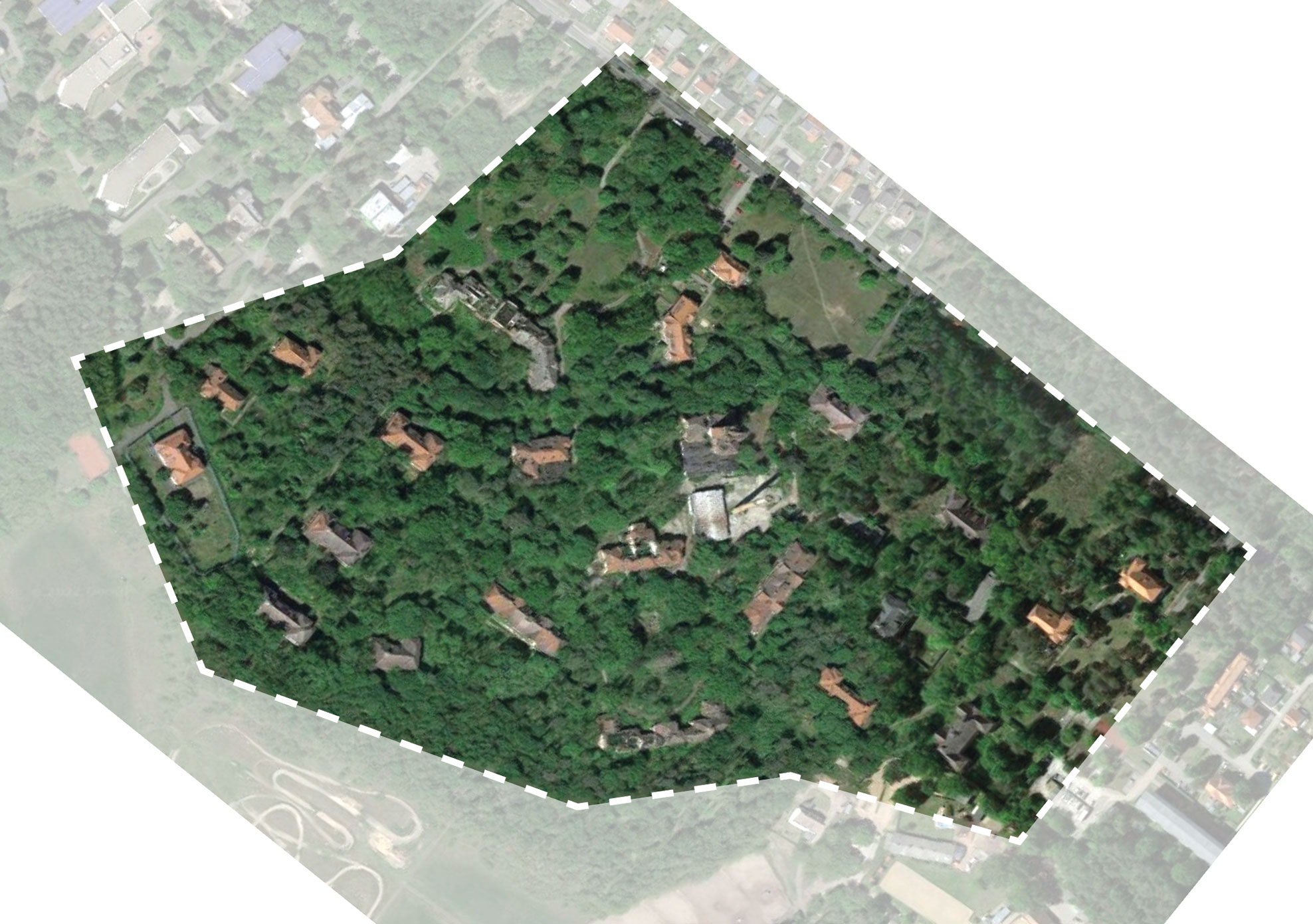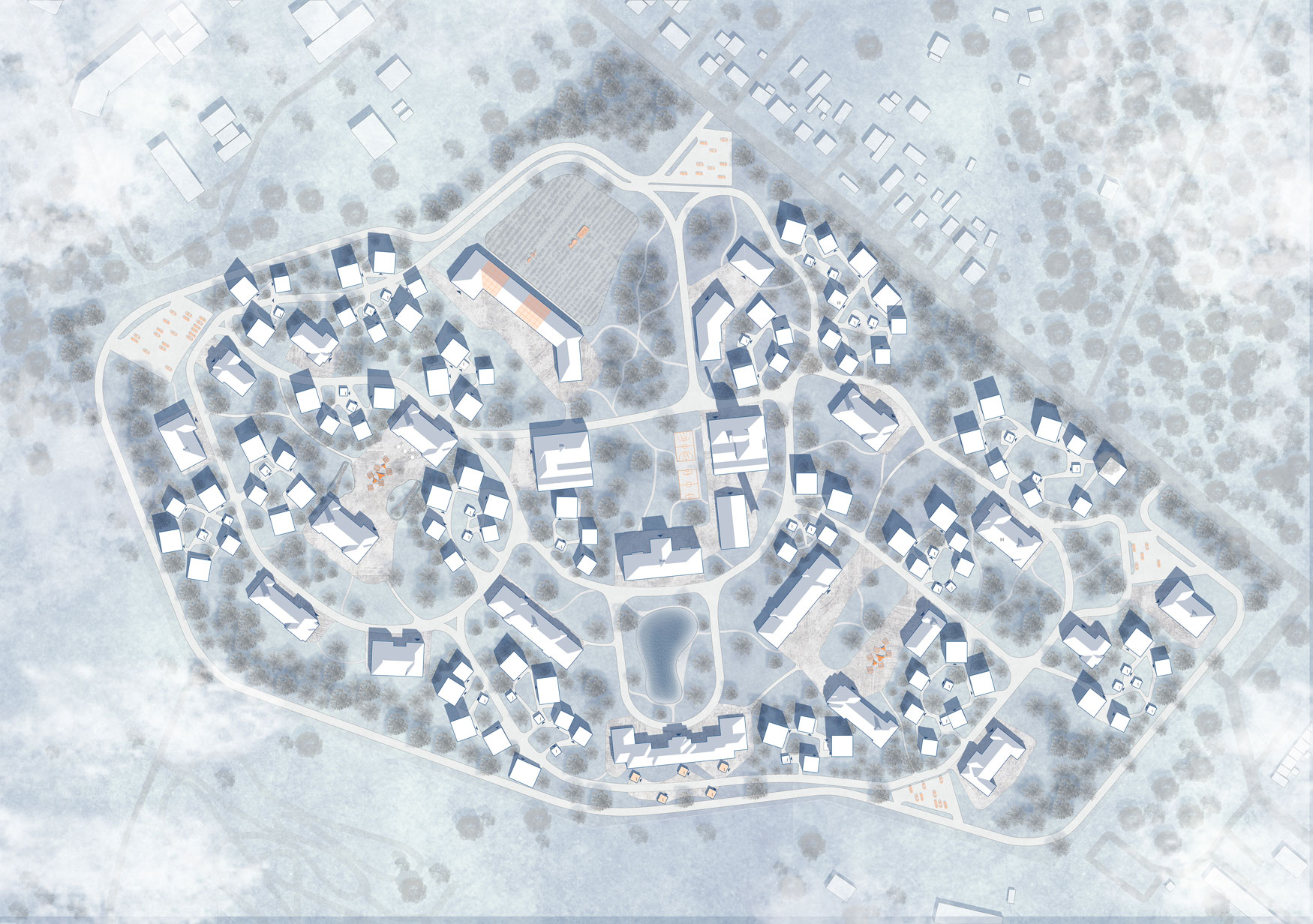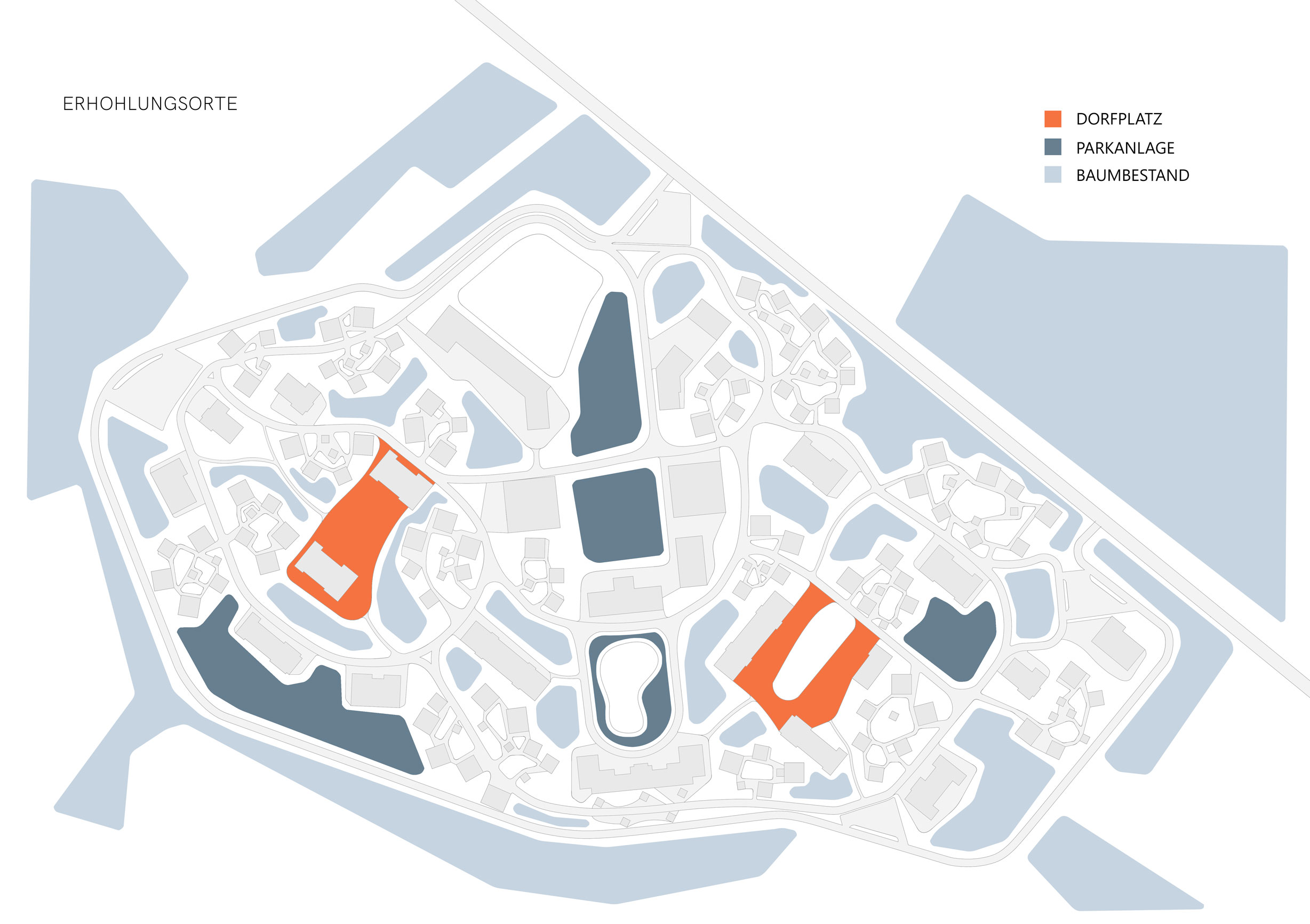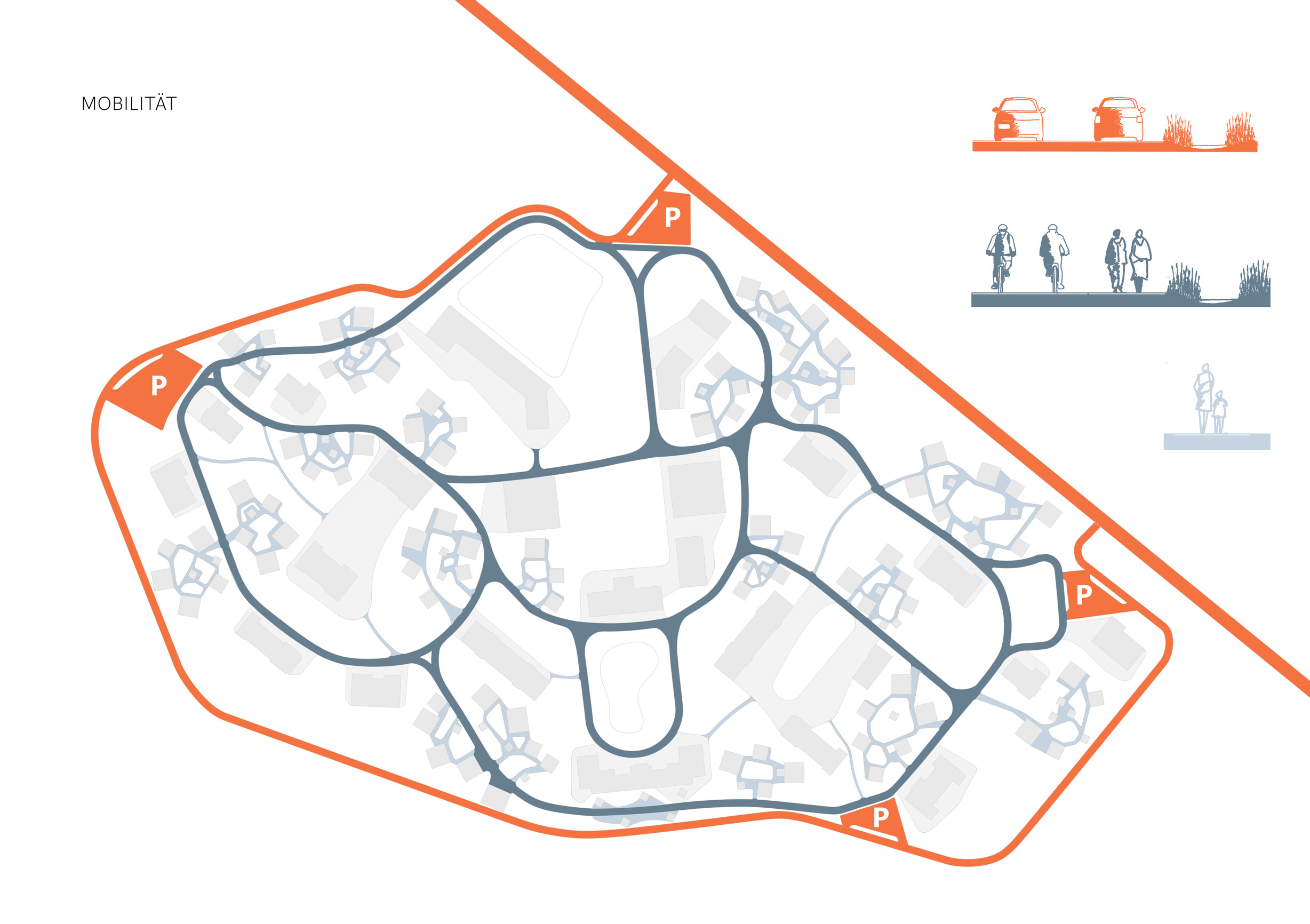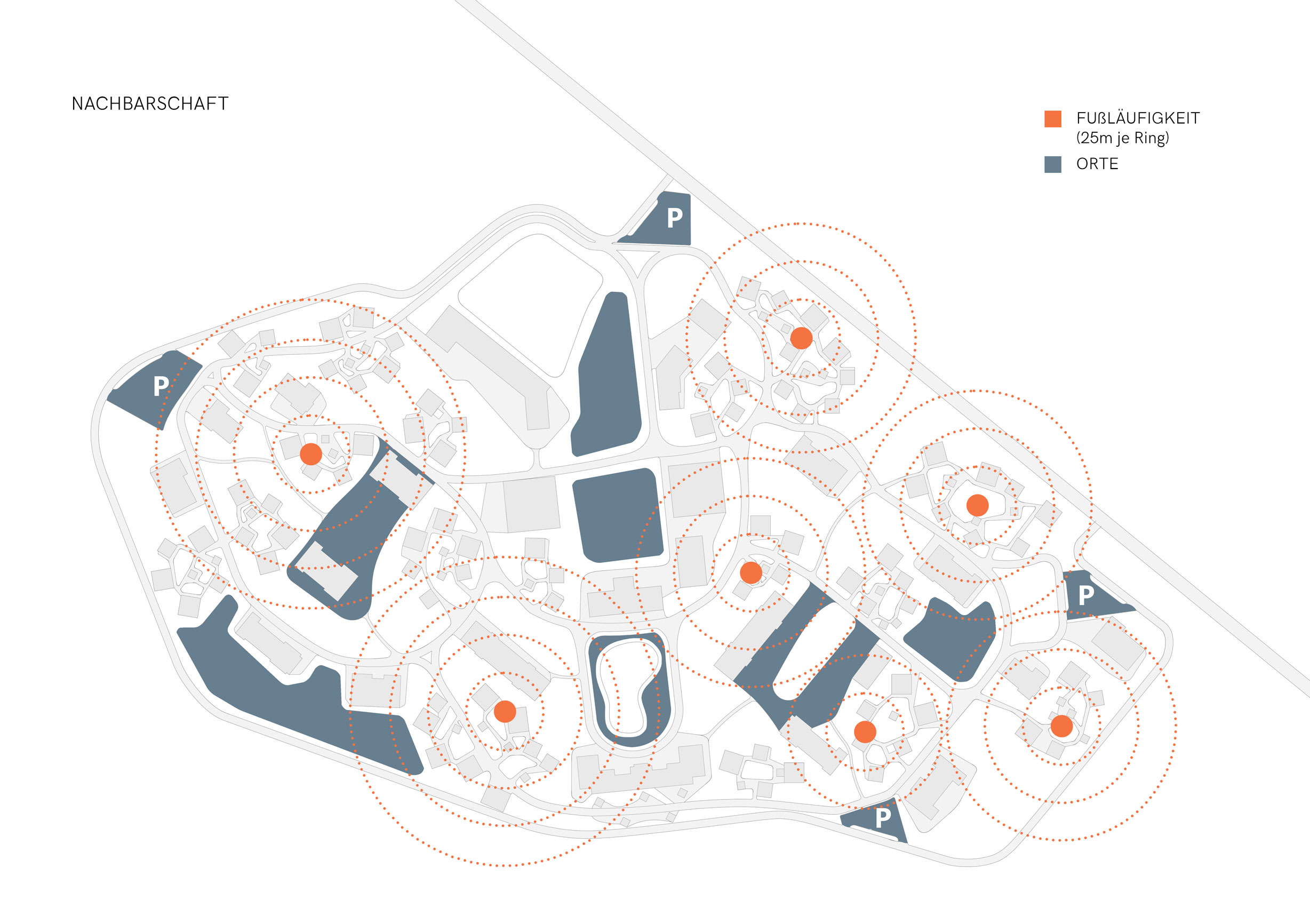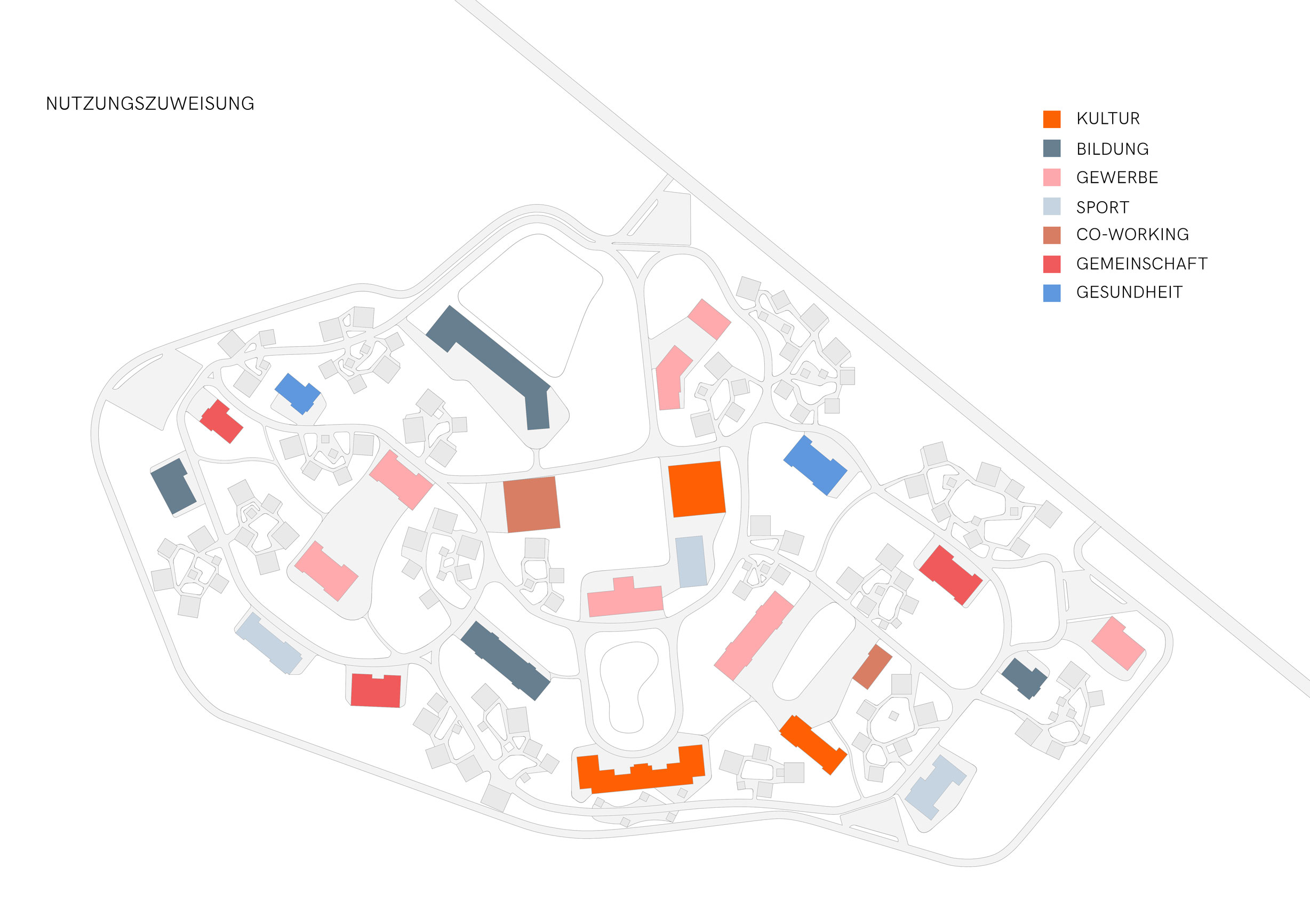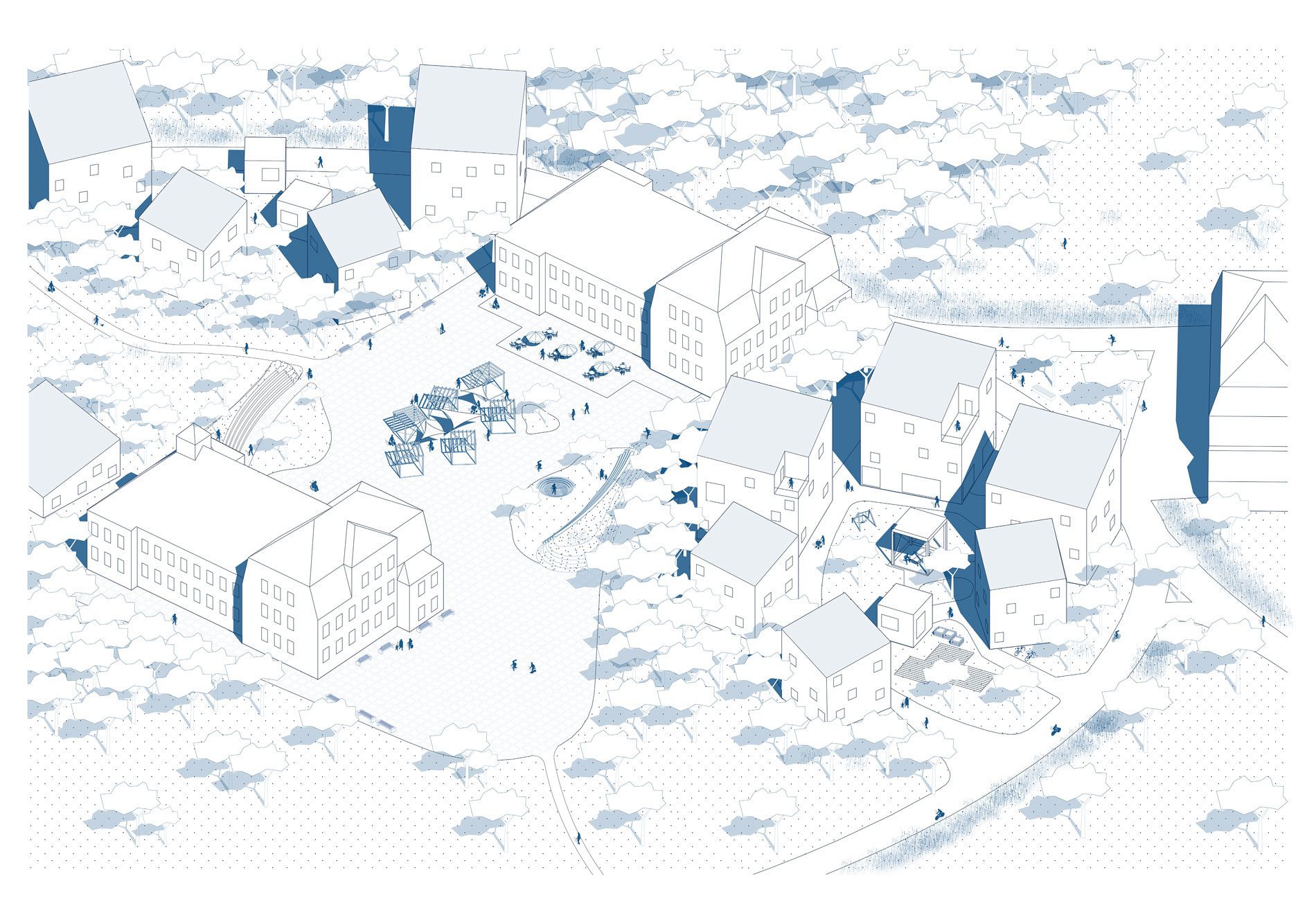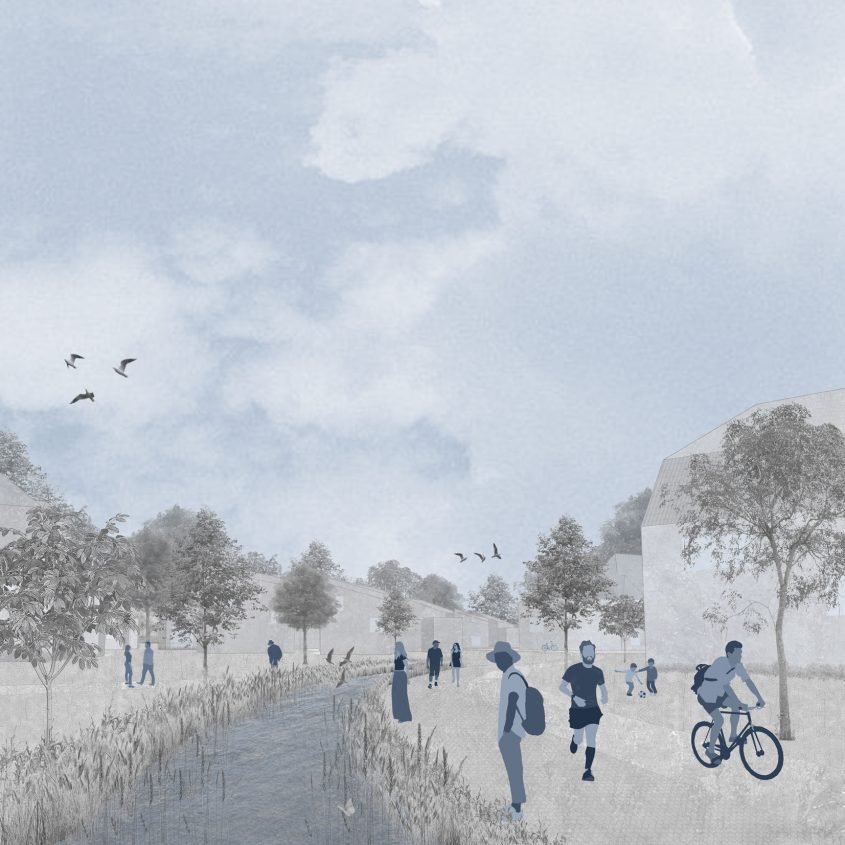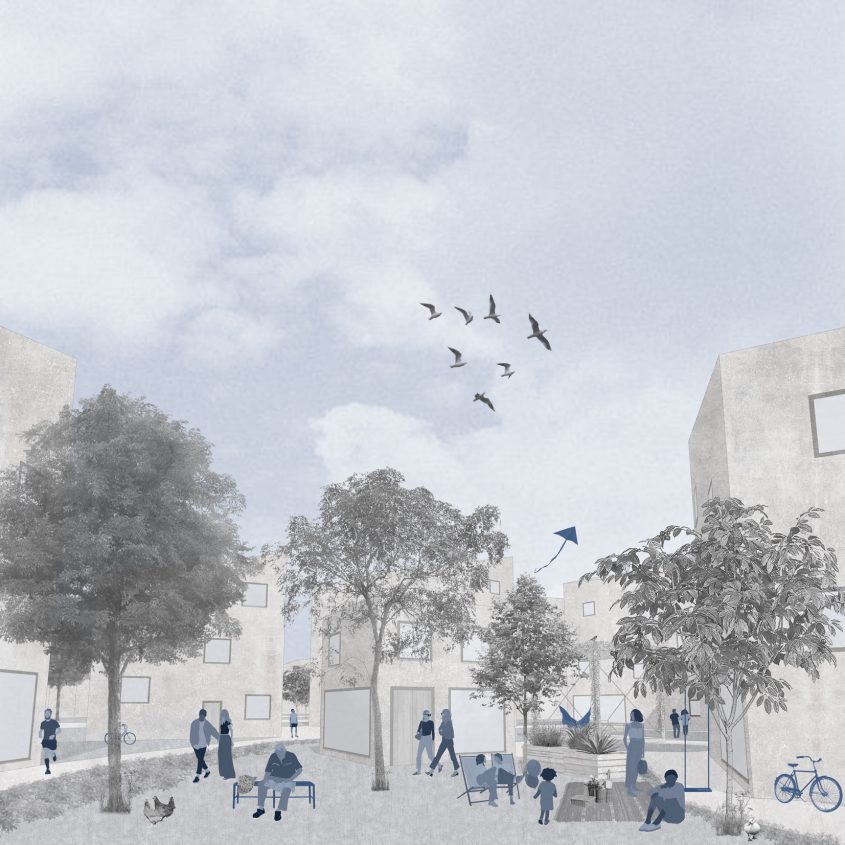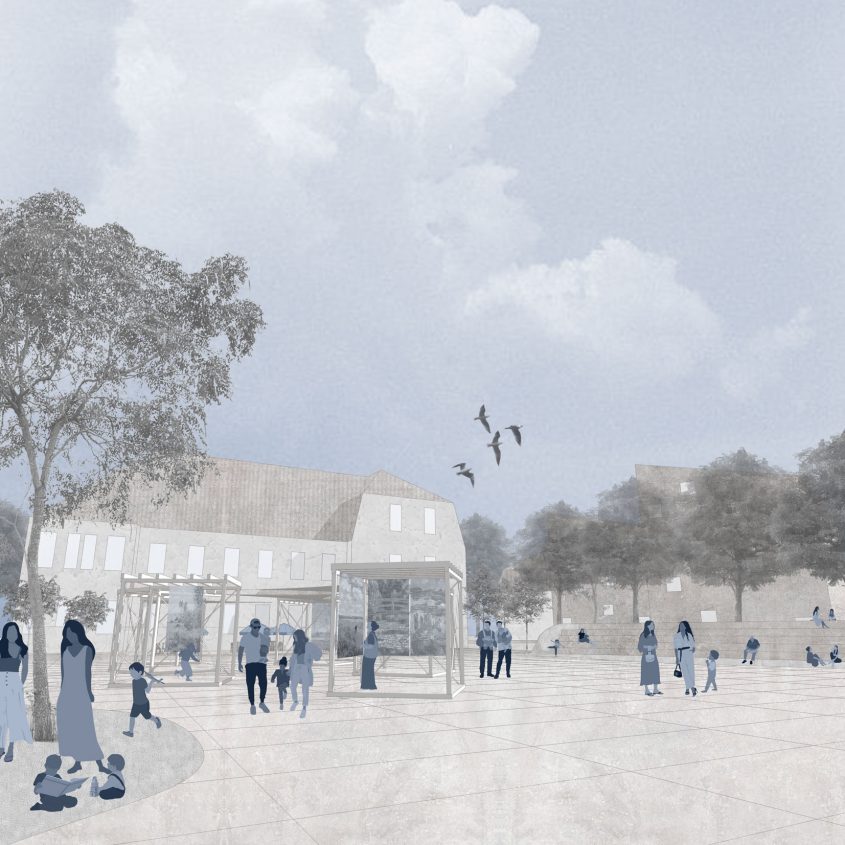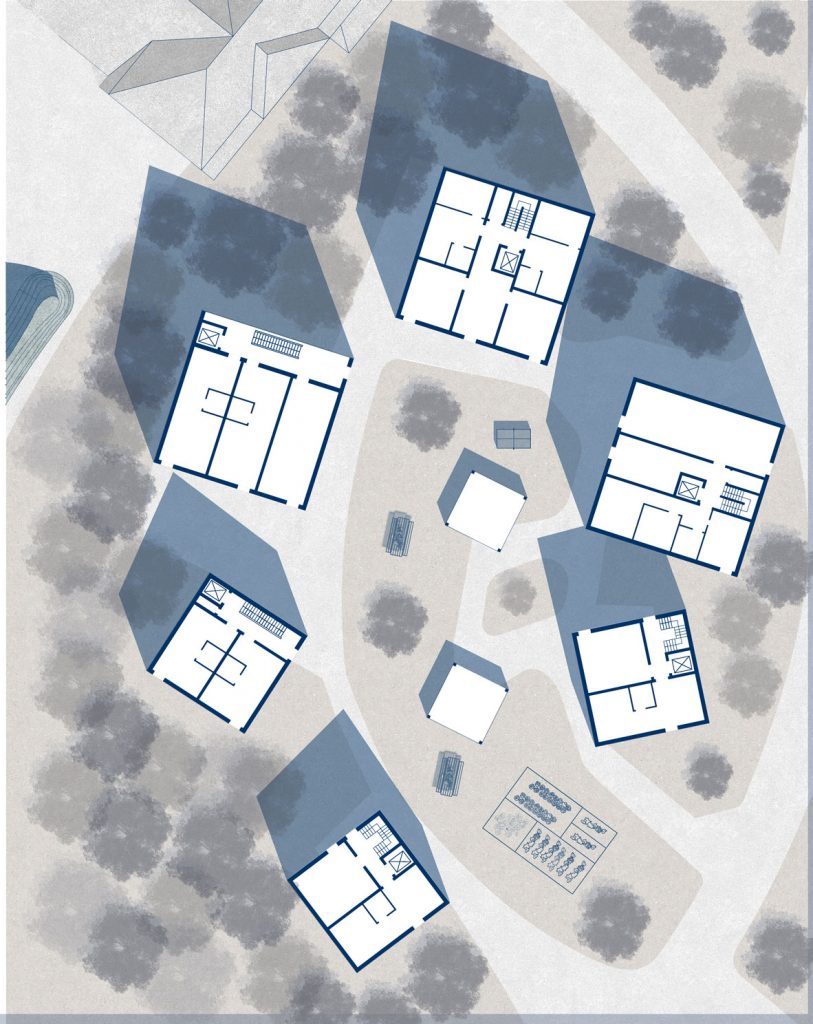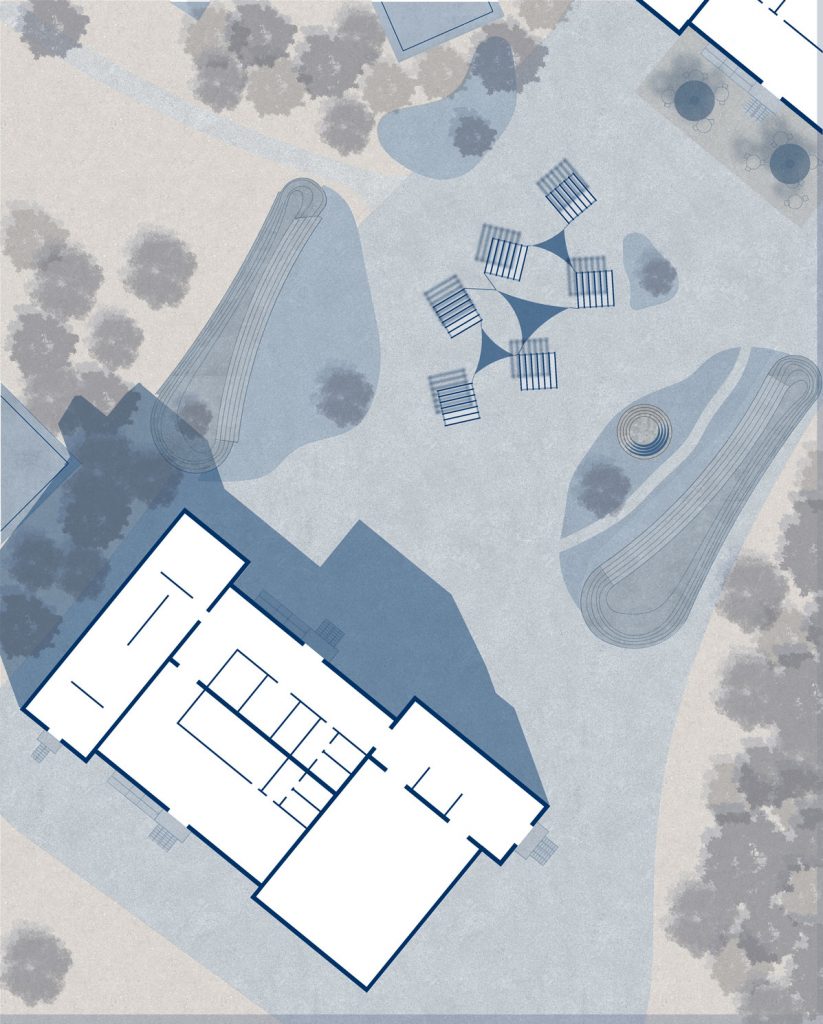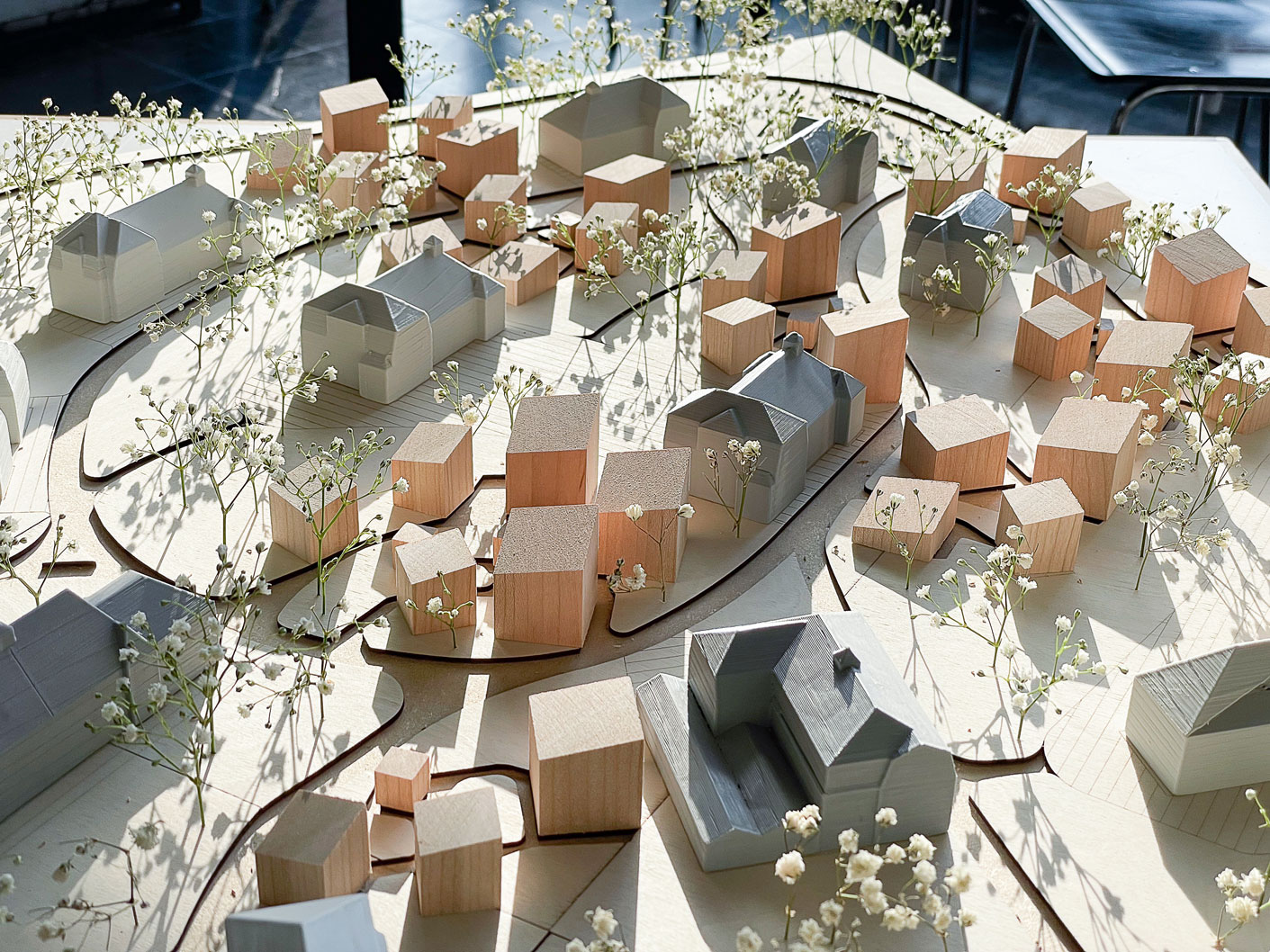Eco Living
The goal of our design is to provide a forward-thinking approach to social and ecological coexistence. Together with my fellow students, we have transformed a 16-hectare plot of land in Teupitz, Brandenburg, approximately 40 km from Berlin, into a diverse and urban living environment with ecological and social qualities through future-oriented city development. The concept emphasizes sufficiency and communal spaces to promote social interaction. A polycentric settlement structure blending commercial and residential areas enables multifunctional use and expands communal spaces. Instead of private garden plots, we’ve created extensive shared spaces for the residents. By minimizing sealed surfaces, we offer the neighborhood a unique blend of urban and natural environments.
The area is designed as a traffic-calmed zone with four parking spaces and cargo bikes available for motorists. It features bicycle and pedestrian paths accompanied by retention basins. Existing building structures are repurposed to create diversity for residents and visitors, including two decentralized marketplaces, an agricultural center serving as an educational and research hub, art and cultural offerings, event spaces, sports and recreational facilities, commercial spaces, and a school. The buildings are strategically positioned to form an open, inviting interstitial space, blurring the lines between community and privacy.
The polycentric hubs also incorporate urban gardening areas and a variety of residential types to encourage new and diverse forms of communal living. The in-house communal spaces serve as hubs for social interaction. The cohesive appearance of the building clusters is achieved through south-facing roofs equipped with photovoltaic panels and smart grid batteries.
We’re proud to share that our project received the first prize in the annual ‚Best of‘ competition series at BHT.“
